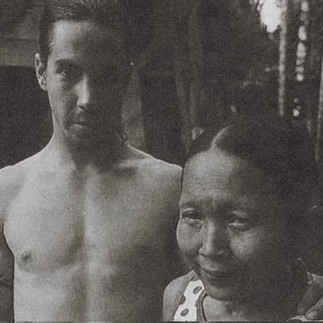
“Indonesia, that's my groove," said Red Hot Chili Peppers in their song "La La La La La La La La" from their 2022 album "Return of the Dream Canteen." Anthony Kiedis, the frontman of the globally acclaimed band, once again found himself drawn to the charm of Indonesia, venturing to the remote and picturesque Mentawai Islands in West Sumatra.
Kiedis’ adoration for Indonesia dates back to 1996 when he garnered attention for adorning his right arm with a tattoo of a traditional Borneo motif, presumably from his 1992 expedition to Kalimantan, where he and Dutch tattoo artist Henk Schiffmacher learned about traditional tattooing from the native communities. He also expressed a desire to explore the waves of Mentawai and immerse himself in the island's rich culture during a conversation with Indonesian presenter Daniel Mananta back in 2012. This year, Kiedis's dream finally came true as he made the journey to Mentawai, where he could not only ride the waves but also delve into the spiritual and cultural heritage of the island.
Through his band's Instagram account, a snapshot captured Kiedis alongside local men on April 16, 2024, accompanied by an interesting caption: '3 shamans tobacco ceremony.’ However, what truly added a layer of fascination to this encounter was the revelation that the two individuals accompanying Kiedis were not mere bystanders, but respected figures within the Mentawai community. Identified through their inked torso as Sikerei, these men are spiritual healers esteemed for their supernatural abilities and connection to the spiritual realm. Adorned with distinctive tattoos that symbolize their elevated status and wisdom, the Sikerei uphold the ancient traditions and wisdom that have sustained the Mentawai people for generations.

The Sikerei, often referred to as the "doctors" of Mentawai, possess a unique ability to heal using traditional herbal remedies sourced from the lush forests that blanket the region. Their tattoos, known as titi, serve as tangible manifestations of their spiritual journey and connection to the natural world. These sacred markings, etched onto their skin with meticulous precision using the traditional Mentawai tattooing tool, lilipat patitik, are imbued with profound symbolism and meaning.
For example, the star-shaped motif known as sibalubalu, which graces the shoulders of the Sikerei, holds profound significance within their shamanic practice. It symbolizes fertility and protection against illness and negative energies, encapsulating their vital role as custodians of community well-being and spiritual balance. Within Mentawai society, the presence of sibalubalu tattoos denotes the esteemed status and role of the Sikerei, who serve as intermediaries between the human realm and the ancestral spirits.
Despite tattoos being perceived as taboo by the majority in Indonesia, particularly due to conservative cultural norms and the influence of Abrahamic religions, their significance within indigenous cultures like the Mentawai cannot be understated. While the popularity and acceptance of tattooing may differ between Western countries and Indonesia, the allure of Indonesia's tattooing traditions transcends cultural boundaries.
The ancient origins and profound symbolism of these traditions captivate foreign visitors from diverse cultural backgrounds, such as Anthony Kiedis, highlighting the global interest in preserving and celebrating indigenous cultures. It is undeniable that by embracing these ancient practices, individuals like Kiedis contribute to the preservation of cultural heritage and the recognition of diverse traditions that make Indonesia a unique and captivating destination.
.png)





